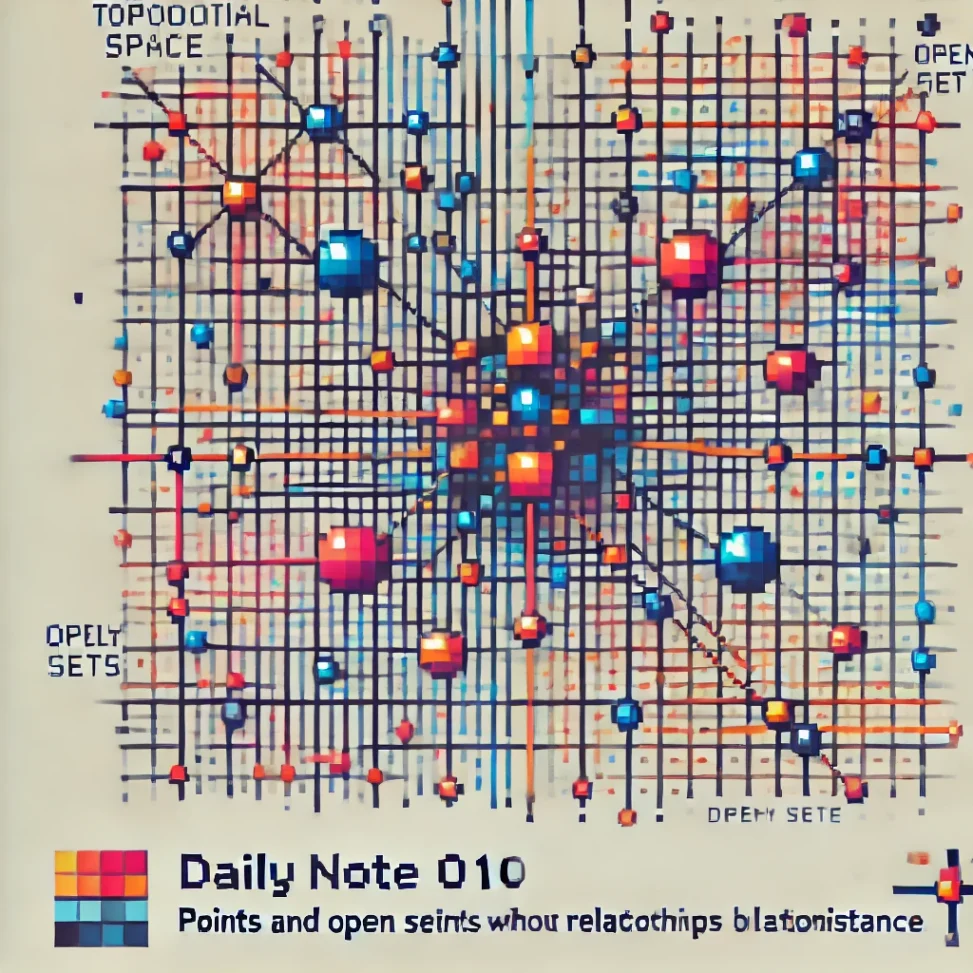Mathematics is, in some sense, the study of some rules governed by other rules based on assumptions and their consequences. Suppose, you wanted to study the arrangement (or connectivity) of two points without describing the distance or angle between them. Topology provides a framework to answer such questions.
Let’s start with a definition1. A topological space is defined by imposing a topology on a set. To define a topology on a set [math] X [/math], pick a collection [math] \tau [/math] where the subsets of [math] X [/math] satisfy the following axioms2
- [math] \tau [/math] contains the empty set ([math] \emptyset [/math]) and [math] X [/math]
- Any arbitrary unions of [math] \tau [/math] are within [math] \tau [/math]
- Any finite intersections of [math] \tau [/math] are within [math] \tau [/math]
With this, we have a generalized notion of how one point relates to another point without including distance or angles. That’s pretty neat.
- We will define a topological space using “open sets, ” but there are other ways of doing so. ↩︎
- I have paraphrased defining a topology from John M. Lee’s Introduction to Topological Manifolds, page 18. ↩︎

Leave a Reply